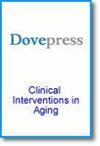衡量老有所事:范围综述及对中国情况的适用性
IF 3.7
3区 医学
引用次数: 0
摘要
背景和目的:老龄化已成为全球主要公共问题之一,老有所事已成为全球目标。准确、可重复的评估工具是对老有所事进行稳健可靠的测量和政策制定的先决条件。然而,目前还缺乏对活跃老龄化评估工具的特点和异质性进行广泛的综述。本研究旨在全面描述当前活跃老龄化评估工具及其特点:我们进行了一次范围综述,重点是活跃老龄化评估工具,并检索了七个数据库:方法:我们以积极老龄化评估工具为重点进行了范围综述,并检索了七个数据库:CNKI、万方、PubMed、Embase、Web of Science Core Collection、Medline 和 Proquest。研究过程遵循了 Arkey 和 O'Malley 的方法论框架以及 PRISMA-ScR 规范。此外,我们还在开放科学框架下注册了研究项目:最终,我们收录了 22 篇文献。积极老龄化评估工具的开发主要发生在 2012 年至 2023 年之间,主要集中在国外(16 项研究)。所有纳入的文献都介绍了多维度的老有所事评估工具。18 项研究从宏观层面研究了老有所事评估工具,4 项研究则侧重于个人层面。此外,22 项研究中有 14 项是基于世界卫生组织的老有所事理论框架。文献中仅有两项积极老龄化评估工具是针对特定老年人群体设计的:结论:未来积极老龄化评估工具的开发应纳入更全面的积极老龄化概念和社会理论。关键词:老龄化;老有所事;健康老龄化;范围综述本文章由计算机程序翻译,如有差异,请以英文原文为准。
Measuring Active Ageing: A Scoping Review and the Applicability to the Situation in China
Background and Purpose: Ageing has become one of the major global public issues and active ageing has become a global goal. Accurate and reproducible assessment tools are a prerequisite for robust and reliable measurement of active ageing and policy formulation. However, a broad scoping review describing the characteristics and heterogeneity of assessment tools for active ageing is lacking. This study aims to comprehensively portray current active ageing assessment tools and their features.
Methods: We conducted a scoping review, focusing on the Active Ageing Assessment Tool, and searched seven databases: CNKI, WanFang, PubMed, Embase, Web of Science Core Collection, Medline, and Proquest. The research process adhered to the methodological framework of Arkey and O’Malley and the PRISMA-ScR specification. More so, we registered the research program with the Open Science Framework.
Results: Ultimately, we included twenty-two pieces of literature. The development of the active ageing assessment tool predominantly occurred between 2012 and 2023, with a focus on foreign countries (16 studies). All included literature presented multidimensional Active ageing assessment tools. Eighteen studies examined active ageing assessment tools at the macro level, while four studies focused on the individual level. Also, fourteen out of the twenty-two studies were based on the World Health Organization’s Theoretical Framework for Active Ageing. The literature contained only two active ageing assessment tools designed for specific subgroups of older people.
Conclusion: Future development of active ageing assessment tools should integrate more comprehensive concepts and social theories of active ageing. Additionally, there is a need to explore active ageing measurement tools tailored for diverse subgroups of the older adults at various levels.
Keywords: ageing, active ageing, healthy ageing, scope review
Methods: We conducted a scoping review, focusing on the Active Ageing Assessment Tool, and searched seven databases: CNKI, WanFang, PubMed, Embase, Web of Science Core Collection, Medline, and Proquest. The research process adhered to the methodological framework of Arkey and O’Malley and the PRISMA-ScR specification. More so, we registered the research program with the Open Science Framework.
Results: Ultimately, we included twenty-two pieces of literature. The development of the active ageing assessment tool predominantly occurred between 2012 and 2023, with a focus on foreign countries (16 studies). All included literature presented multidimensional Active ageing assessment tools. Eighteen studies examined active ageing assessment tools at the macro level, while four studies focused on the individual level. Also, fourteen out of the twenty-two studies were based on the World Health Organization’s Theoretical Framework for Active Ageing. The literature contained only two active ageing assessment tools designed for specific subgroups of older people.
Conclusion: Future development of active ageing assessment tools should integrate more comprehensive concepts and social theories of active ageing. Additionally, there is a need to explore active ageing measurement tools tailored for diverse subgroups of the older adults at various levels.
Keywords: ageing, active ageing, healthy ageing, scope review
求助全文
通过发布文献求助,成功后即可免费获取论文全文。
去求助
来源期刊

Clinical Interventions in Aging
GERIATRICS & GERONTOLOGY-
CiteScore
6.20
自引率
2.80%
发文量
193
期刊介绍:
Clinical Interventions in Aging, is an online, peer reviewed, open access journal focusing on concise rapid reporting of original research and reviews in aging. Special attention will be given to papers reporting on actual or potential clinical applications leading to improved prevention or treatment of disease or a greater understanding of pathological processes that result from maladaptive changes in the body associated with aging. This journal is directed at a wide array of scientists, engineers, pharmacists, pharmacologists and clinical specialists wishing to maintain an up to date knowledge of this exciting and emerging field.
 求助内容:
求助内容: 应助结果提醒方式:
应助结果提醒方式:


